
Ueno Park and cherry blossoms, with the Peace Tower in the distance from the 1922 Peace Commemorative Exhibition.
See also:
Graves of the Shogitai, Ueno Park, Tokyo, c. 1930.
O-Hanami (Cherry Blossoms Viewing)
Meiji Industrial Exhibition, Ueno Park, 1907
Ueno Park Museums, c. 1910
Peace Commemorative Exhibition, Ueno Park, Tokyo, 1922
Shinobazu Pond at Ueno Park, c. 1910
Lotus Flower at Shinobazu Pond, c. 1910
“When Edo (Tokyo) was being built out of the marshes by the first Tokugawa Shogun, Ueno Hill was the unlucky gate to the north, the entryway for devils. The second Tokugawa Shogun, Hidetaka, asked Tenkai, the priest-designer of Nikko, to erect a guardian temple town of Ueno. By the close of the seventeenth century, Ueno contained a cluster of seventy-two halls and shrines to this end.
“Most of the buildings came down in 1868 when the samurai were crushed at Ueno by the Imperial Army, marking the beginning of the Meiji Restoration. On the grounds of this sudden, decisive breach between the Japan of shogun and samurai and the new industrial and military Japan, Ueno Park was born – a vast plain of lakes, national museums, and winding lanes where those who drink to cherry blossoms congregate in the spring for hanami, the cherry blossom festival.”
– The Sudden Disappearance of Japan, by J.D. Brown,1994
Most famous today for its acres of springtime cherry blossoms, Ueno-koen [upper field park] continues to bridge both feudal Edo with modern Tokyo.
In the centuries previous to the Restoration, Ueno was a temple ground upon which were found several significant shrines and other religious edifices. The most notable, Toshogu Shrine, memorializes the first Shogun, Tokugawa Ieyasu, and is a present-day reminder that Ueno was also the scene of the final stand by Tokugawa loyalists, the elite Shogitai [“Manifest Righteousness Regiment”], against the restoration of Imperial rule in 1868.
The original plan by the Meiji reformers had been to build a hospital atop the Ueno Hill battleground. Instead, it was recommended (by Dutch consultant Dr. A.F. Baudwin) that Ueno would become one of Tokyo’s first true public parks; a park of cultural enlightenment designed along the European model of wide, tree-draped paths, grass-covered gathering areas and public recreation grounds. Thus, after the last of the post-Restoration rebellions were put down, Ueno Park became home to the National Museum (1882), the Zoological Garden (1882), the Imperial Museum (1909), and the forerunner of the National Diet Library, the Tokyo Library (1885). Restaurants, tea houses, and a baseball field would also eventually find room within the park grounds among its thousands of cherry trees.
Saigo Takamori, the general who marshalled Imperial troops against the Shogotai, is also memorialized, with some irony, at Ueno Park. A decade after the Restoration, it was Saigo who would lead an unsuccessful insurrection — the Satsuma Rebellion — against the very same Imperial government he had previously championed. The revolt by Saigo was raised to protest what he viewed as Japan’s too-rapid rush toward Westernization including the demotion of Samurai [servant warrior] to a lower social status and their eventual elimination altogether as the military class in favor of a conscripted army. A populist figure in modern Japanese history, the statue of Saigo, commissioned by the Meiji government and cast in 1893, remains on the park grounds today. The Meiji government chose to clothe him as a commoner, not as a military figure, a decision that irked his wife and family to no end.
“Uyeno (or Ueno) Park is the largest and handsomest of the Metropolitan Parks at the N edge of the capital in Shitaya Ward, celebrated for the Imperial Museum, the Zoological Gardens, the beautiful Mausolea of the shoguns, the Time Bell, Bronze Daibutsu, and many minor attractions, is one of the brightest, cleanest, and highest points in the city, and from its eminences comprehensive views of the environing region are obtainable.
“A wealth of fine old trees flank the shaded avenues, many of which lead to dainty shrines and sequestered retreats. Vast throngs congregate here in April to view the splendid cherry blossoms which overshadow the public drive; in August to enjoy the wealth of lotus blooms on Shinobazu Pond and at all times of the year to partake of the joyousness which pervades the place.”
– Terry’s Japanese Empire, T. Philip Terry, 1914
Ueno Park views, c. 1910
- Aerial view of Ueno Park, during the Taisho Exhibition, 1914.
- Ueno Park gazebo, during O-hanami, c. 1910.
- Early morning light at Ueno Park, c. 1910.
- O-hanami (Cherry Blossom viewing), c. 1910.
- Cherry blossoms at Ueno Park, c. 1910.
- Crowded Ueno Park, during O-hanami, c. 1910.
- Jinrikisha runners and passengers, Ueno Park, c. 1910.
- Statue of Saigo, Ueno Park, c. 1910.
- Toshogu Shrine under an early spring snow, c. 1910.
- Entrance to the Ueno Park zoo, c. 1910.
- Jinrikisha at Ueno Park, c. 1910.
- Blooming lotus in Shinobazu Pond at Ueno Park, c. 1910.
- Restaurant at Ueno Park, c. 1910.
- Imperial Museum and Hyokeikwan at Ueno Park, c. 1910.
Ueno Park still retains its religious significance, too, in the modern age. Kaneiji temple, burned during the fighting on Ueno Hill in 1868, rebuilt but destroyed again during the 1945 firebombings and rebuilt yet again in the postwar period, is another piece connecting the past with the present at Ueno Park. Kaneiji served as the personal Tokugawa temple and several of Ieyasu’s successors are entombed on its grounds. The main Tokugawa family Shinto worship place, Toshogu, and its nearby peony garden, is also located within the park. The demure Benten temple, built on an island in Shinobazu pond, was reachable by a long, stone causeway — since demolished — stretching across the water.
The remains of the Ueno Daibutsu [large Buddha], cast of bronze in 1660, are on display atop a flight of stone steps beneath surrounding cherry and juniper trees. Damaged during the 1923 Great Kanto earthquake, the Ueno Daibutsu would suffer a final, demeaning and sacrilegious fate two decades later during the Pacific War when all bronze but its face was melted down for use in the war effort.
Adding to the area’s intellectual character was nearby Tokyo Imperial University, moved from Kanda to Hongo, adjacent to the park, in the 1880’s. A hospital, too, would eventually fulfill the first wishes of the Meiji government when Tokyo University Hospital was also sited west of the park in 1886. Ueno Park was the host site for several industrial expositions during the Meiji and early Taisho periods, including the 1907 Meiji Exposition.


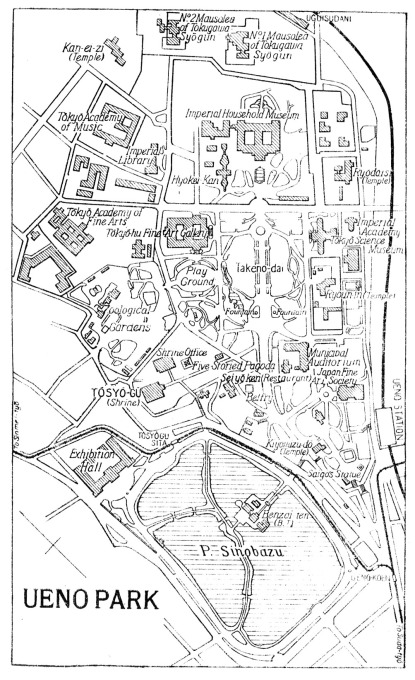
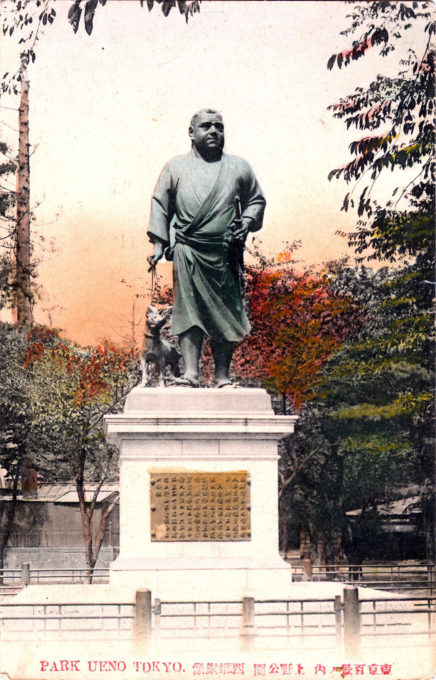
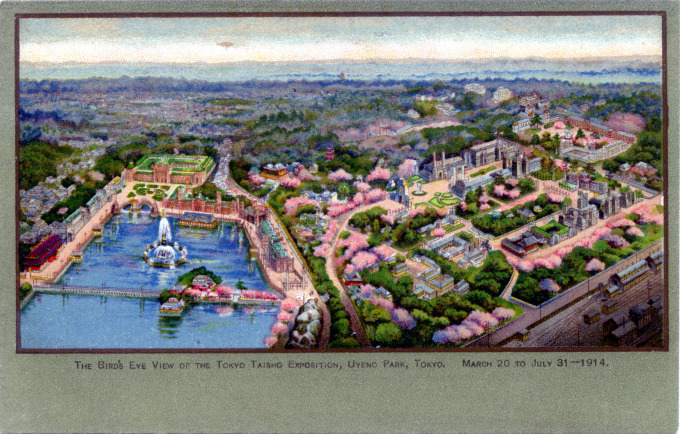
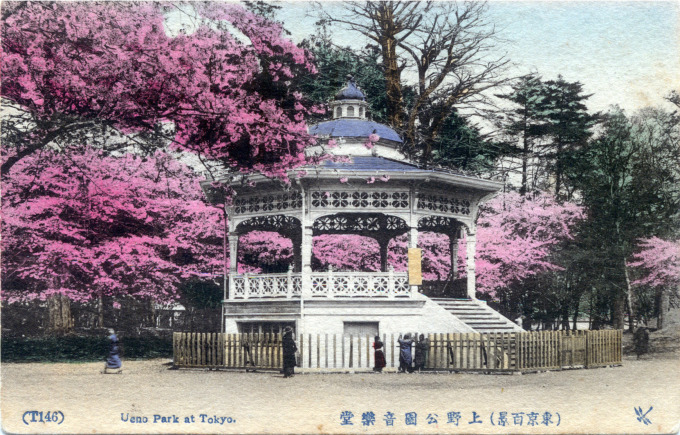
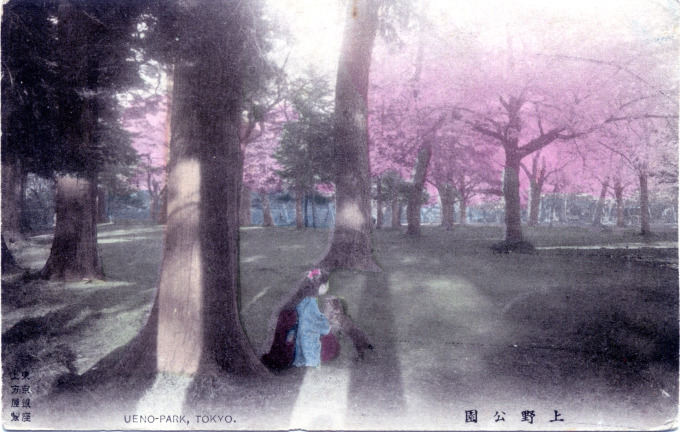
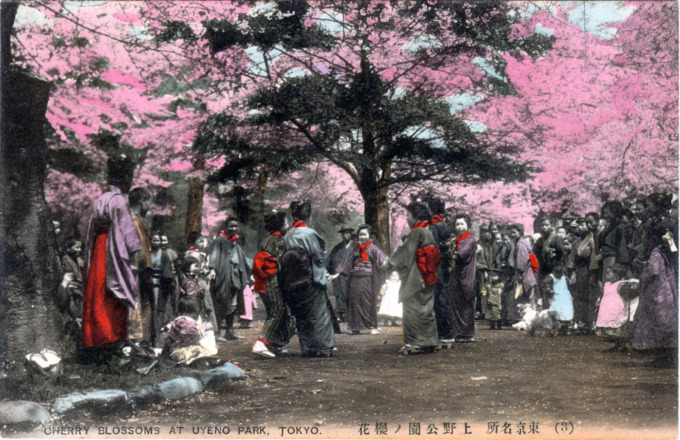
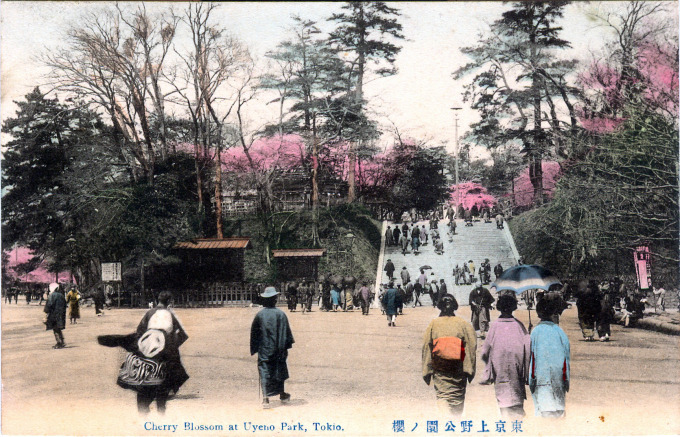
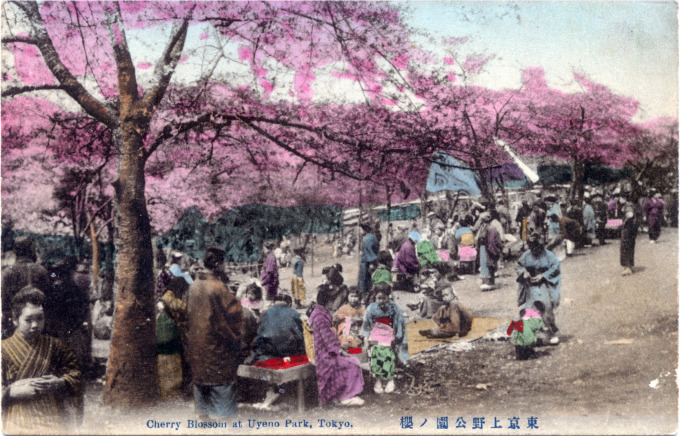
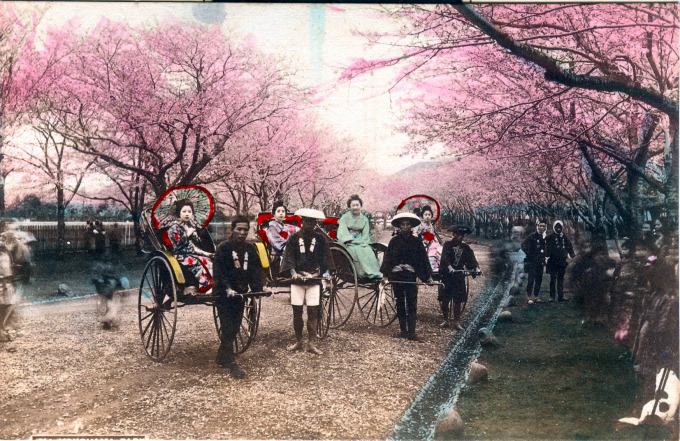
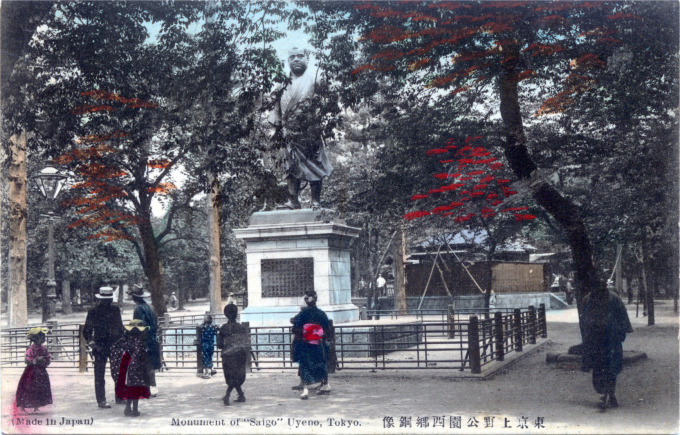
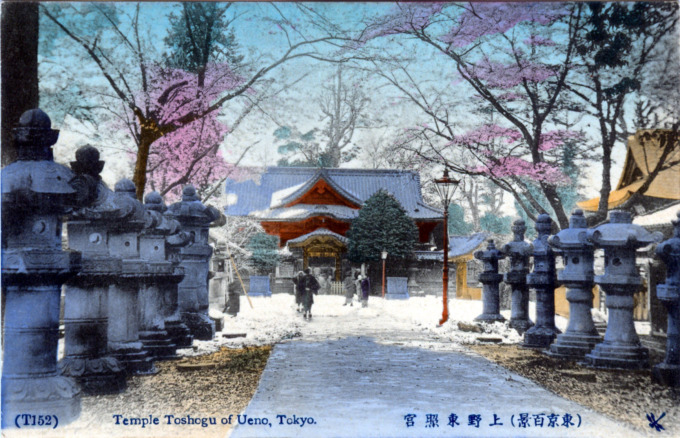
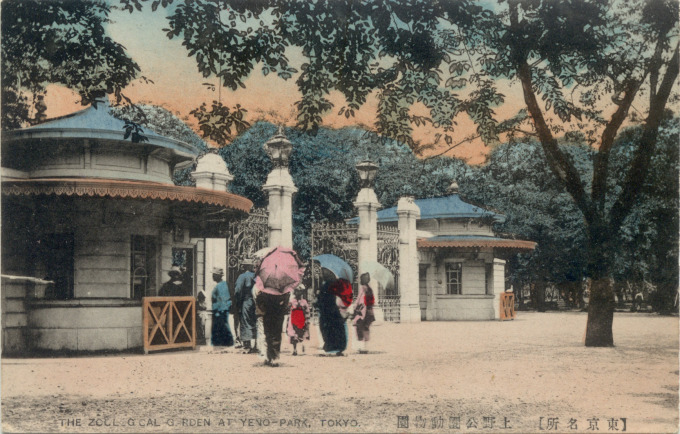
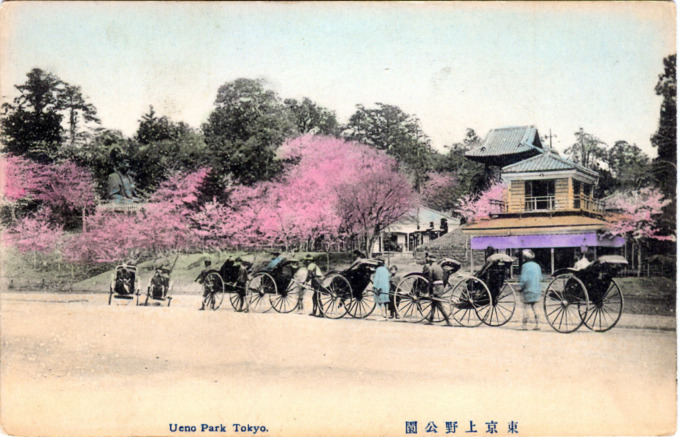
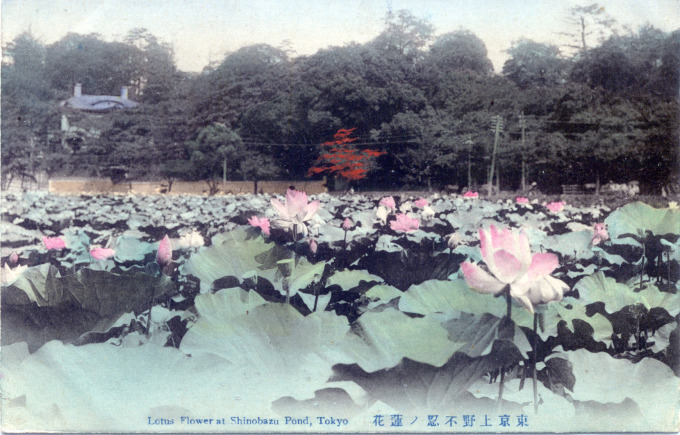
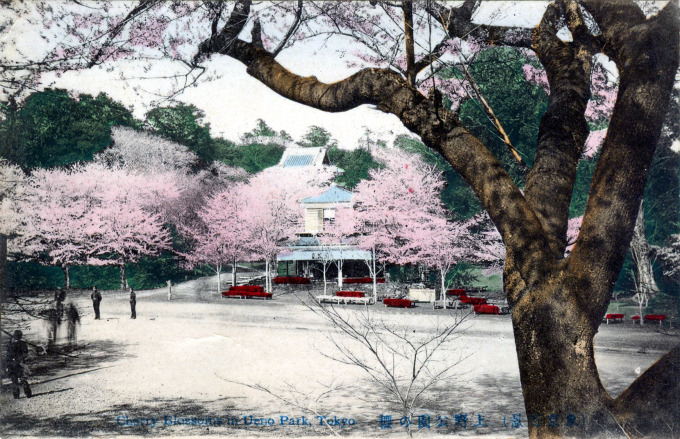
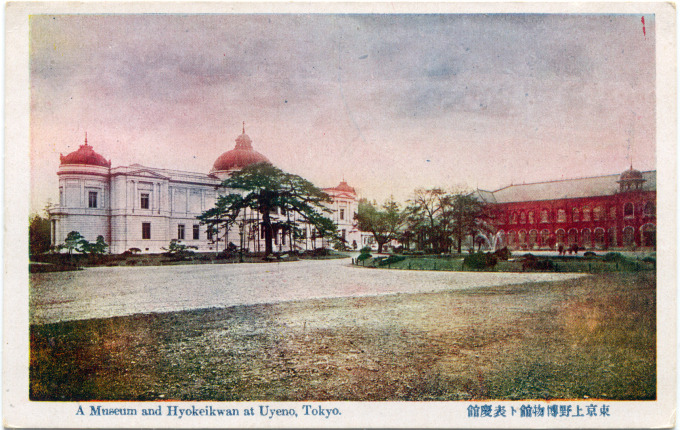
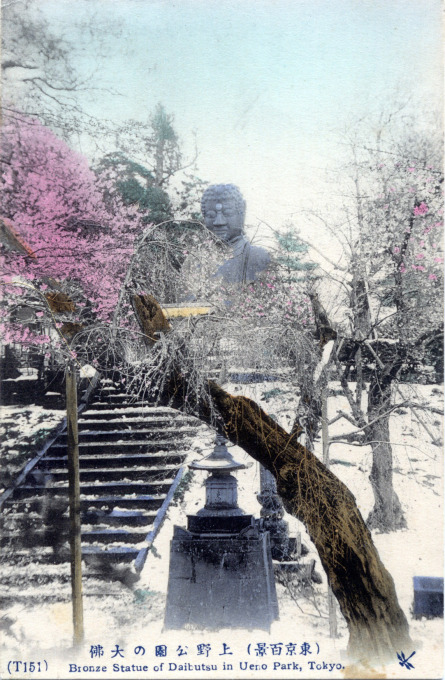
Pingback: O-hanami (Cherry Blossom Viewing) | Old Tokyo
Pingback: Ueno Park Museums, c. 1910. | Old Tokyo
Pingback: Lotus Flower at Shinobazu Pond, Ueno, c. 1910. | Old Tokyo
Pingback: Ueno Hirokoji, c. 1910-1945. | Old Tokyo
Pingback: Ueno Zoological Garden, Ueno Park | Old Tokyo
Pingback: Tokyo Sightseeing Bus Co. advertising postcards, Tokyo, c. 1930. | Old TokyoOld Tokyo
Pingback: Hakubutsu-kan (National Museum), Ueno Park, Tokyo, c. 1910. | Old TokyoOld Tokyo